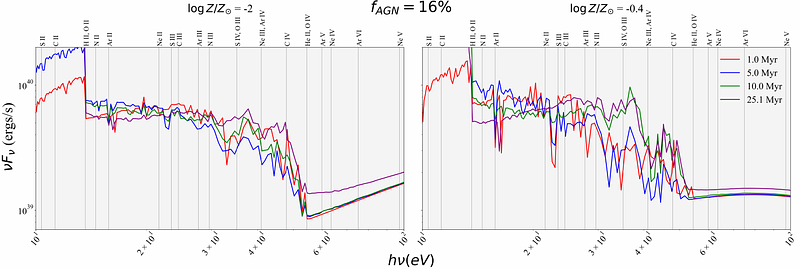Emission Line Diagnostics for IMBHs in Dwarf Galaxies: Accounting for BH Seeding and ULX Excitation

Emission Line Diagnostics for IMBHs in Dwarf Galaxies: Accounting for BH Seeding and ULX Excitation
Chris T. Richardson, Jordan Wels, Kristen Garofali, Julianna M. Levanti, Vianney Lebouteiller, Bret Lehmer, Antara Basu-Zych, Danielle Berg, Jillian M. Bellovary, John Chisholm, Sheila J. Kannappan, Erini Lambrides, Mugdha S. Polimera, Lise Ramambason, Maxime Varese, Thomas Vivona
AbstractDwarf AGN serve as the ideal systems for identifying intermediate mass black holes (IMBHs) down to the most elusive regimes ($\sim 10^3 - 10^4 M_{\odot}$). However, the ubiquitously metal-poor nature of dwarf galaxies gives rise to ultraluminous X-ray sources (ULXs) that can mimic the spectral signatures of IMBH excitation. We present a novel photoionization model suite that simultaneously incorporates IMBHs and ULXs in a metal-poor, highly star-forming environment. We account for changes in $M_{BH}$ according to formation seeding channels and metallicity, and changes in ULX populations with post-starburst age and metallicity. We find that broadband X-rays and UV emission lines are insensitive to $M_{BH}$ and largely unable to distinguish between ULXs and IMBHs. Many optical diagnostic diagrams cannot correctly identify dwarf AGN. The notable exceptions include He~II~$\lambda$4686 and [O~I]~$\lambda$6300, for which we redefine typical demarcations to account for ULX contributions. Emission lines in the mid-IR show the most promise in separating stellar, ULX, IMBH, and shock excitation while presenting sensitivity to $M_{BH}$ and $f_{\text{AGN}}$. Overall, our results expose the potential biases in identifying and characterizing dwarf AGN purely on strong line ratios and diagnostic diagrams rather than holistically evaluating the entire spectrum. As a proof of concept, we argue that recently discovered over-massive BHs in high-$z$ JWST AGN might not represent the overall BH population, with many galaxies in these samples potentially being falsely classified as purely star-forming.